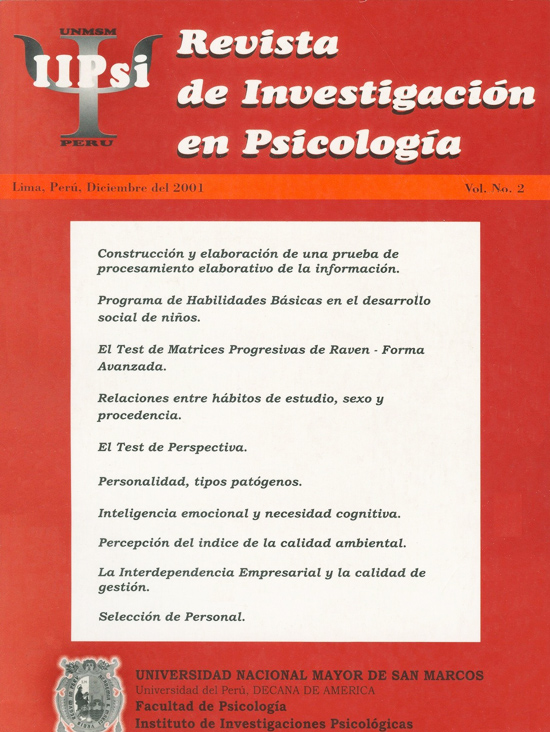Explanatory model of the relationship between study habits, sex and provenance of the school in high school graduands from low socioeconomic status
DOI:
https://doi.org/10.15381/rinvp.v4i2.5028Keywords:
study habit, high school graduates, analysis log lineal, advantage rates, explanatory modelsAbstract
Through a comparative correlacional study, the relationship was evaluated amog study habits by sex and origin of the school. By means of an analysis log lineal, six explanatory models of the relationship were evaluated, using the rates of advantages for the interpretations of the select pattern. The participants are students of 5to of secondary of two equivalent mixed schools, of Lima (73) and of Country: Chimbote (61), of socioeconomic level under between 16 and 18 years. The used instrument is the Cuestionary Maddox adapted conceptually by Bazán and Aparicio (1993). It was found that the study habits of the students are moderate, that the habits averages of the provincial and the women they are better that their Limean couples (t=5.34, p=0.0001) and males (t=3.59, p=0.0001)respectivamente. The best selected model is that that she affirms that as much the origen as the sex explain the types of study habits independently (G2= p=0.5748). This explanation is bigger in the case of the origin that the sexo For a Limean student with appropiate habits there are four of country with the same level of habits, and for each male student with appropiate habits there are three students women with the same level of habits.Downloads
Published
Issue
Section
License
Copyright (c) 2001 Jorge Bazán Guzmán, Ana Aparicio Pereda

This work is licensed under a Creative Commons Attribution-NonCommercial-ShareAlike 4.0 International License.
THE AUTHORS RETAIN THEIR RIGHTS:
a. The authors retain their trademark and patent rights, and also on any process or procedure described in the article.
b. The authors retain the right to share, copy, distribute, execute and publicly communicate the article published in the Journal of Research in Psychology (for example, place it in an institutional repository or publish it in a book), with acknowledgment of its initial publication in the Journal of Research in Psychology.
c. Authors retain the right to make a subsequent publication of their work, to use the article or any part of it (for example: a compilation of their work, lecture notes, thesis, or for a book), provided that they indicate the source. of publication (authors of the work, magazine, volume, number and date).






